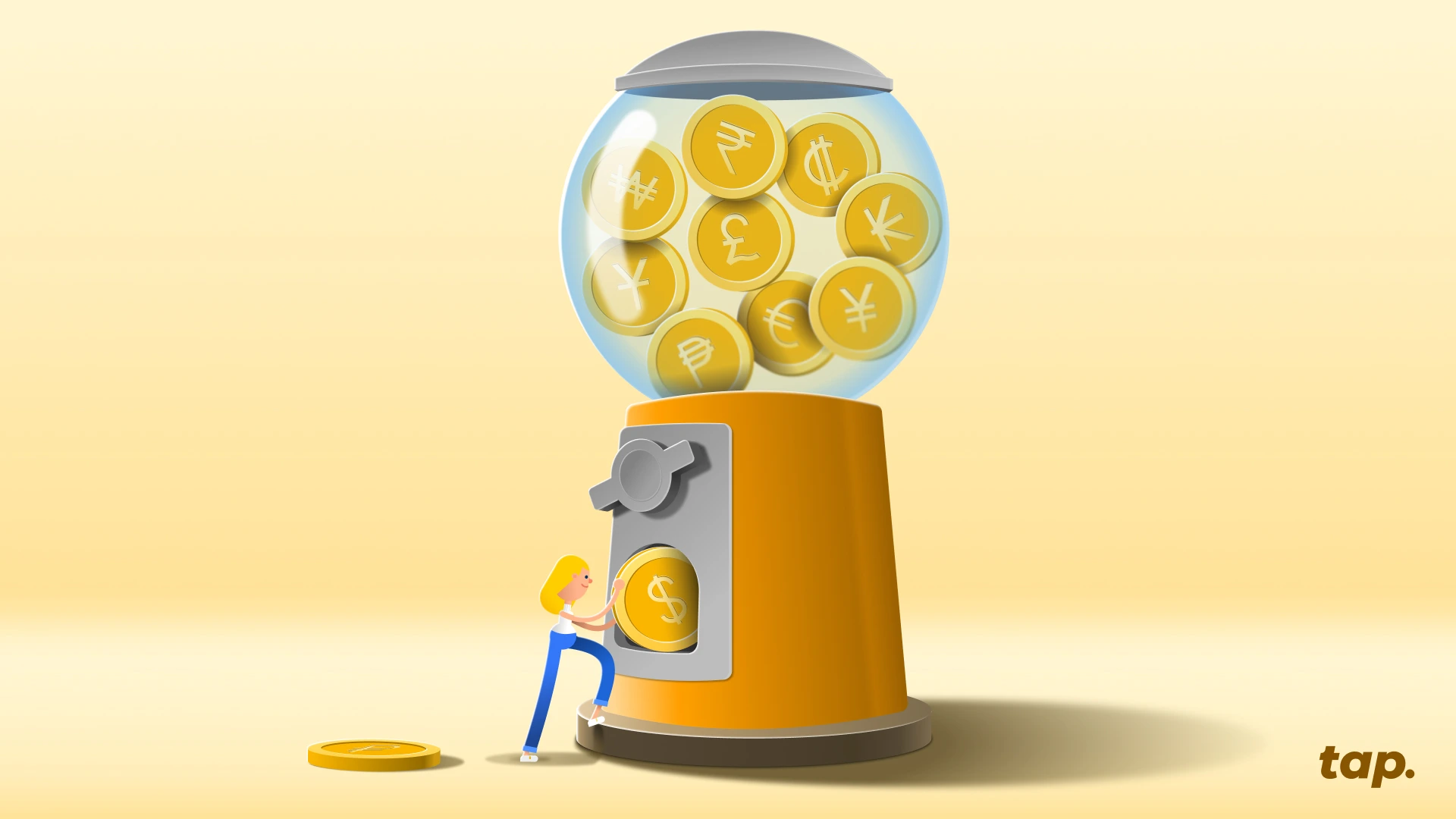In our interconnected global economy, currency symbols are everywhere, whether you're planning international travel, running an e-commerce business, formatting financial documents, or simply trying to understand pricing on a foreign website. Knowing how to recognise and use currency symbols correctly is essential.
The long and the short of it is that currency symbols are shorthand notations that represent different monetary units around the world.
Unlike ISO currency codes (like USD or EUR), these symbols provide a quick visual reference that transcends language barriers. From the familiar dollar sign ($) to the Indian rupee symbol (₹), each symbol tells a story of economic identity and cultural significance.
Understanding currency symbols becomes particularly important when dealing with international transactions, creating multilingual websites, formatting invoices, or developing financial applications. They're not just academic knowledge - they're practical tools for anyone engaged in global commerce or travel.
What is a currency symbol?
A currency symbol is a graphical representation used to illustrate a specific monetary unit. These symbols serve as universal shorthand, allowing people to quickly identify and work with different currencies without needing to spell out the full currency name or remember complex three-letter codes.
For example, the dollar sign ($) immediately signals US dollars, while the euro symbol (€) represents the European Union's currency. The British pound uses (£), and the Japanese yen employs (¥). Each symbol has been carefully designed to be distinctive and memorable.
It's important to distinguish currency symbols from ISO currency codes. While the symbol for US dollars is $, the ISO code is USD. The symbol for euros is €, but the ISO code is EUR. Symbols are visual and compact, while codes are standardised three-letter abbreviations used primarily in financial systems and international banking.
Currency symbol placement rules (before or after the number?)
The placement of currency symbols relative to numbers varies significantly across countries and cultures, following local conventions rather than universal rules.
In most English-speaking countries, the symbol appears before the number: $100, £50, or A$75 for Australian dollars. However, many European countries place the symbol after the number: 100€ in France, or 50₽ in Russia.
Some currencies have unique formatting conventions. In Cape Verde, you might see 20$00, where the dollar sign appears before the decimal portion. Similarly, some Latin American countries write $20.00 or $20,00 depending on their decimal separator conventions.
When working with international documents or websites, always research the local convention for the specific country and currency you're dealing with. This attention to detail demonstrates cultural awareness and professionalism in global business communications.
Complete list of world currency symbols by region
Europe
The Americas
Asia & Pacific
Middle East
Africa
Cryptocurrencies
How to type currency symbols on your keyboard
Windows Shortcuts
- Dollar ($): Shift + 4
- Euro (€): Alt + 0128
- British Pound (£): Alt + 0163
- Japanese Yen (¥): Alt + 0165
- Cent (¢): Alt + 0162
Mac Shortcuts
- Dollar ($): Shift + 4
- Euro (€): Option + Shift + 2
- British Pound (£): Option + 3
- Japanese Yen (¥): Option + Y
- Cent (¢): Option + 4
Additional Methods
For symbols not available through keyboard shortcuts, you can use Unicode codes, copy from character maps, or use online symbol generators. Some fonts may not support all currency symbols, so consider using web-safe fonts like Arial or Times New Roman if your specific font isn’t supportive.
Currency symbols in documents and spreadsheets
Microsoft Word
Navigate to Insert > Symbols to access the complete symbol library. You can also use Alt codes or set up custom keyboard shortcuts for frequently used symbols.
Microsoft Excel
Use Format Cells > Currency to automatically apply currency formatting. Excel recognises most major currency symbols and can format numbers accordingly.
Google Docs
Go to Insert > Special Characters, then search for "currency" to find available symbols. You can also bookmark frequently used symbols for quick access.
Google Sheets
Use Format > Number > Currency to apply currency formatting. Google Sheets automatically detects your location and suggests appropriate currency symbols.
Most traded and recognised currency symbols
The most globally recognised and traded currency symbols include:
- US Dollar ($) - The world's primary reserve currency, used in international trade and forex markets
- Euro (€) - The second most traded currency, representing 19 European Union countries
- British Pound (£) - One of the oldest currencies still in use, significant in global finance
- Japanese Yen (¥ or JP¥) - Major Asian currency and key player in international markets
- Chinese Yuan (¥ or CN¥) - Rapidly growing importance in global trade and reserves
- Indian Rupee (₹) - Representing one of the world's largest economies
Closing summary
Understanding currency symbols is more than academic knowledge - it's a practical skill that enhances your ability to navigate our global economy. Whether you're travelling abroad, conducting international business, or simply trying to understand pricing on a foreign website, knowing how to recognise and properly use currency symbols will have you one step ahead.
This article is for general information purposes only and is not intended to constitute legal, financial or other professional advice or a recommendation of any kind whatsoever and should not be relied upon or treated as a substitute for specific advice relevant to particular circumstances. We make no warranties, representations or undertakings about any of the content of this article (including, without limitation, as to the quality, accuracy, completeness or fitness for any particular purpose of such content), or any content of any other material referred to or accessed by hyperlinks through this article. We make no representations, warranties or guarantees, whether express or implied, that the content on our site is accurate, complete or up-to-date.




